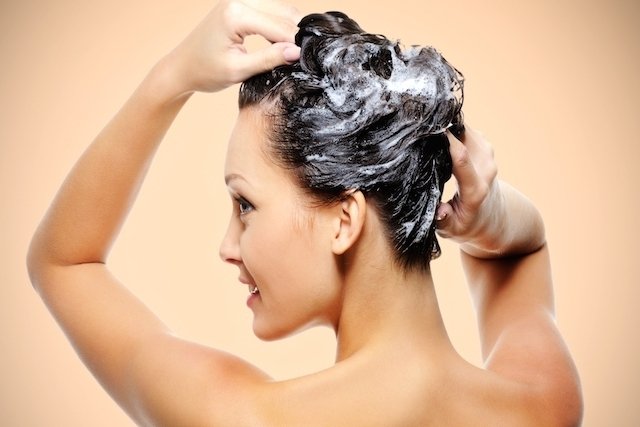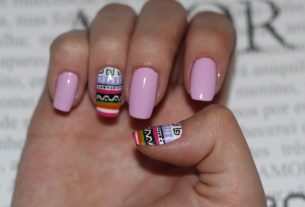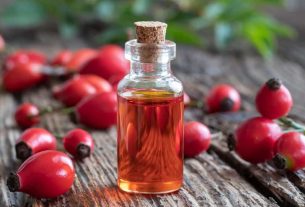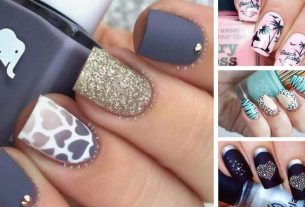Hair suffers countless attacks every day, caused by the effects of the use of chemical products such as straightening, bleaching and dyeing, as well as damage caused by brushing, straightening or air pollution.
To recover strands that have become weak, brittle and porous, it is necessary to carry out treatments that hydrate and strengthen the hair, based on essential oils, keratin, amino acids and vitamins, present in appropriate shampoo, conditioner and hair moisturizer, and it is important to adjust the water temperature, and be careful with brushing and using products that protect the hair from damage, for example.
Therefore, the best solutions for damaged hair are:

1. Moisturize your hair regularly
When your hair is very dry and damaged, it is recommended to moisturize it weekly, however the interval should be at least 15 days for those with an oily scalp.
To hydrate effectively, it is recommended to choose quality products, with the following steps being recommended:
- Clean the hair with shampoo, preferably anti-residue, and remove excess water with a towel;
- Apply the product in a small amount to each strand of hair, massaging them gently;
- Leave the product to act, according to the time recommended by the manufacturer, preferably warming the hair with an aluminum cap or a towel;
- Rinse well and finish with conditioner.
To enhance the effect of the moisturizing mask, you can add a few drops of essential oil, such as Argan, Olive Oil or Macadamia, which have nourishing and regenerative capabilities.
Some examples of moisturizing creams include Absolut repair masks, Redken Extreme, Inoar Macadâmia, Revitrat nutri power, Silicon Mix, Hydra Rescue treatment, in addition to the Kérastase product line, for example.
Furthermore, there are recipes for homemade hair moisturizers, which are very effective, cheap and natural, such as an avocado mask with honey or a mask with carrots and almonds, for example. Check out some homemade mask recipes for each hair type.

2. Choose the ideal product
It is very important that the products used, from shampoo, conditioners and moisturizers, are suitable for each hair type, contributing to each person’s needs. The main tips are:
- Frizzy hair: they tend to have drier hair, as the natural hydration of the strands has greater difficulty reaching the ends, in addition to being thinner strands. Products with moisturizing properties, based on keratin, elastin or quinoa, are recommended;
- Curly hair: the use of masks with moisturizing properties are recommended for curly hair, especially those containing panthenol, shea butter, as well as oils, such as olive or argan;
- Chemically treated hair: strands that have undergone straightening, progressive brushing and similar treatments should use products that help with the recovery of strands and that are formulated for this type of hair, there are already several options on the market, with reconstructive effects. It is also recommended to use silicone and protective products against the heat of the straightener or dryer;
- Bleached hair: hair that undergoes bleaching or highlights ends up becoming very damaged, and the use of moisturizing and reconstructive products is recommended, preferably made for blonde hair, such as chamomile or specific products to avoid the yellowing effect.
Furthermore, people who have damaged hair due to excessive use of a hairdryer or straightener should use products with a moisturizing and reconstructive effect, and it is essential to apply thermoprotective products first, to allow the cuticle to be sealed, as well as a finisher, especially the base. of oils after.
3. Carry out hair cauterization
Hair cauterization, also known as hair plastic surgery, is a hair restructuring treatment that uses the combination of keratin and heat to close pores and eliminate frizz, reducing volume and leaving hair smoother, softer, hydrated and shiny.
It is always recommended for damaged, fragile, brittle hair or hair with open cuticles, which is in need of a deep and repairing treatment. Find out how cauterization is done and the care you need to take.
4. Make a hair schedule
The hair schedule is a care routine that helps recover damaged hair. In this treatment, a care schedule is programmed, which alternates between periods of hydration, nutrition and reconstruction, with specific products, for a period that can last up to 6 months. Learn how to create your own hair schedule in Hair Schedule for Damaged Hair.

5. Be careful when washing
When taking a shower, washing your hair must be done carefully to prevent it from breaking during the process. It is preferable to wash your hair during the day, as when you sleep with a wet scalp, the humidity favors the appearance of dandruff. and wire breakage.
Furthermore, it is recommended that the water is warm or cold, as very hot water removes the layer of fat that protects the hair, leaving it weaker and more brittle. Find out more about other essential precautions when washing your hair.
6. Avoid straighteners and dryers
The heat generated by these procedures damages the hair, so they should be avoided by anyone who wants to improve hair health. If it is not possible to avoid it, you should prefer to straighten it with a hairdryer, keeping a distance of 30 cm from the hair. Flat irons should preferably be made with a ceramic base, as they control temperature better.
7. Food care
A nutritious diet is essential for the recovery of damaged hair, with the presence of proteins, present in meat, milk and eggs, as well as nutrients such as omega 3, vitamin A, vitamin C, Iron and Zinc, present in foods such as nuts, being important. seeds and vegetables, for example, which are essential for healthy growth and strengthening of hair.
Find out more in How to eat a diet to strengthen your hair.

Sign up for our newsletter and stay up to date with exclusive news
that can transform your routine!
Warning: Undefined array key "title" in /home/storelat/public_html/wp-content/plugins/link-whisper-premium/templates/frontend/related-posts.php on line 12
Warning: Undefined array key "title_tag" in /home/storelat/public_html/wp-content/plugins/link-whisper-premium/templates/frontend/related-posts.php on line 13




